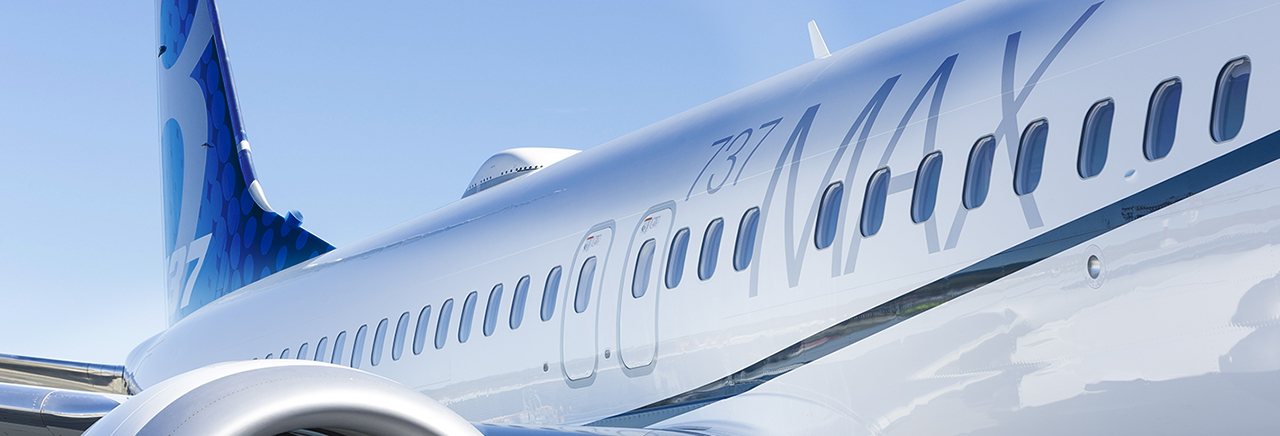MCAS, or Maneuvering Characteristics Augmentation System, is a flight control law implemented on the 737 MAX to improve aircraft handling characteristics and decrease pitch-up tendency at elevated angles of attack.
Frequently Asked Questions
The Maneuvering Characteristics Augmentation System (MCAS) flight control law was designed and certified for the 737 MAX to enhance the pitch stability of the airplane—so that it feels and flies like other 737s.
MCAS only activates in the rare instance when three conditions occur:
- The airplane nose approaches a higher-than-usual angle.
- The pilot is manually flying up.
- The airplane flaps are up.
Angle of Attack (AOA) is the difference between the pitch angle (nose direction) of the airplane and the angle of the oncoming wind.
Boeing has developed an MCAS software update to provide additional layers of protection if the AOA sensors provide erroneous data. The additional layers of protection include:
- Flight control system will now compare inputs from both AOA sensors. If the sensors disagree by 5.5 degrees or more with the flaps retracted, MCAS will not activate. An indicator on the flight deck display will alert the pilots.
- If MCAS is activated in non-normal conditions, it will only provide one input for each elevated AOA event. There are no known or envisioned failure conditions where MCAS will provide multiple inputs.
- MCAS can never command more stabilizer input than can be counteracted by the flight crew pulling back on the column. The pilots will continue to always have the ability to override MCAS and manually control the airplane.
These updates reduce the crew’s workload in non-normal flight situations and prevents erroneous data from causing MCAS activation.
All primary flight information required to safely and efficiently operate the 737 MAX is included on the baseline primary flight display. This is true of all our commercial products. Boeing doesn’t put a price on required safety features.
Crew procedures and training for safe and efficient operation of the airplane are focused around airplane roll and pitch attitude, altitude, heading and vertical speed, all of which are integrated on the primary flight display. All 737 MAX airplanes display this data in a way that is consistent with pilot training and the fundamental instrument scan pattern that pilots are trained to use. Some operators have their own tailored training requirements and have requested that we also provide AOA information on the Primary Flight Display, and we have offered the optional capability to provide that information. However, not all customers wish to include this feature on their Primary Flight Display, so it is offered as a customer-selected option. With the software update, customers are not charged for the AOA disagree feature or their selection of the AOA indicator option.
Boeing has delivered more than 370 MAXs to 47 customers (through February 2019).
About 5,000 737 MAX airplanes have been ordered by 107 customers.
Our development efforts always start with listening to our customers to understand their needs and requirements. Based on customer feedback and market data, the 737 MAX was the clear choice to succeed the Next-Generation 737. Over a six-year period, our team worked through a disciplined methodical development process that culminated with a robust test program that validated the airplane’s safety and performance.
Boeing Contacts
Boeing Corporate
Charles Bickers
charles.n.bickers@boeing.com
+1 206 769 3234
Peter Pedraza
peter.p.pedraza@boeing.com
+1 312 618 8998
Boeing Commercial Airplanes
Paul Bergman
paul.r.bergman2@boeing.com
+1 206 724 7292
Australia
David Sidman
david.sidman@boeing.com
+61 466 528 657
Canada
Tracey Shelton
tracey.l.shelton@boeing.com
+1 204 230 0012
China
Yukui Wang
yukui.wang@boeing.com
+86 1360 131 7722
Mike Ma
mike.ma2@boeing.com
+86 1381 108 9058
Europe
Chantal Dorange
chantal.dorange@boeing.com
+34 630 046 736
Keelan Morris
keelan.j.morris@boeing.com
+44 077 9882 8790
India
Ashmita Sethi
ashmita.sethi@boeing.com
+91 9899 0208 56
Japan
Rob Henderson
robert.j.henderson3@boeing.com
+81 90 1429 9662
Shino Yuasa
shino.yuasa@boeing.com
+81 70 2796 0708
Middle East
Fakher Daghestani
fakher.a.daghestani@boeing.com
+97 150 625 4855
Saffana Michael
saffana.michael2@boeing.com
+97 150 459 0651
Russia
Elena Alexandrova
elena.alexandrova@boeing.com
+7 495 797 3415
Latin America
Ana Paula Ferreira
ana.p.ferreira@boeing.com
+1 425 324 7030
Joseph Loeffler
joseph.o.loeffler@boeing.com
+1 425 306 2145
Southeast Asia
Melissa Cheah
melissa.l.cheah@boeing.com
+65 9630 7263
Zoe Leong
zoe.leong@boeing.com
+65 9658 3630
Other Contacts
National Transportation Safety Board (NTSB)
Christopher O’Neil
christopher.oneil@ntsb.gov
+1 202 603 7984
Federal Aviation Administration (FAA)
Gregory Martin
gregory.martin@faa.gov
+1 202 267 3454
